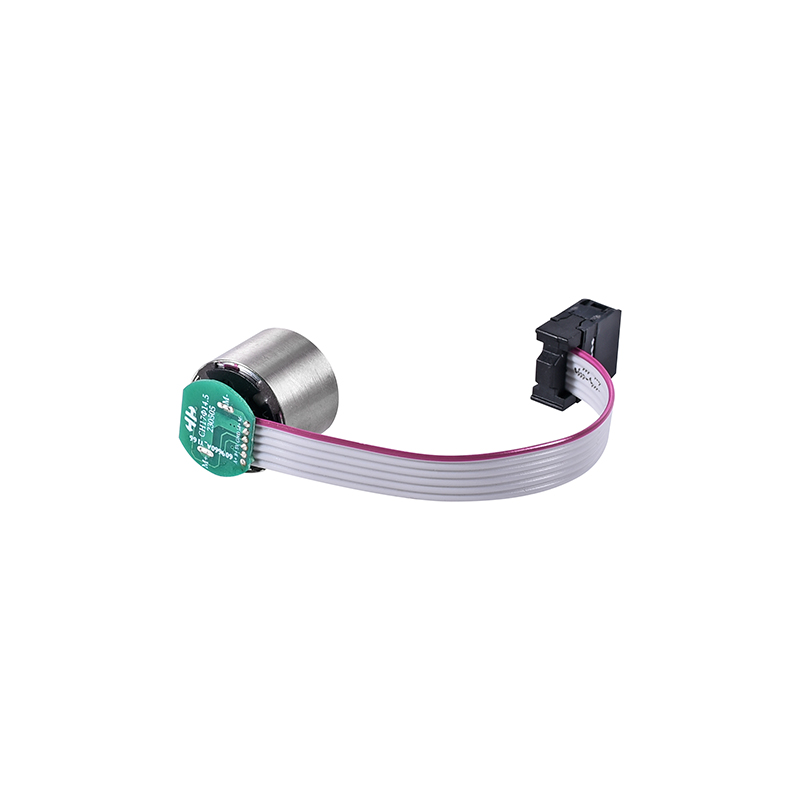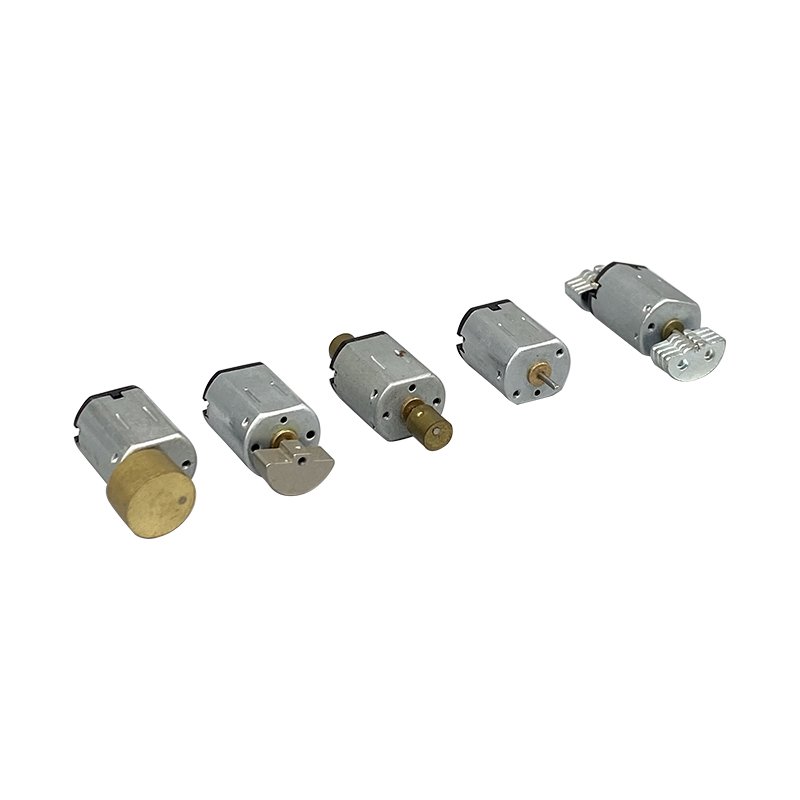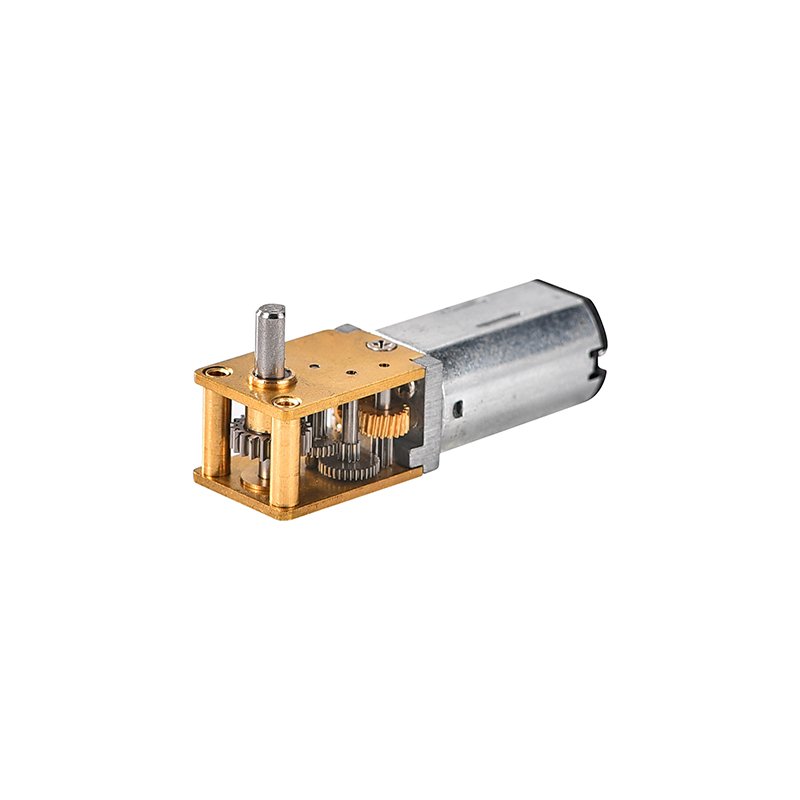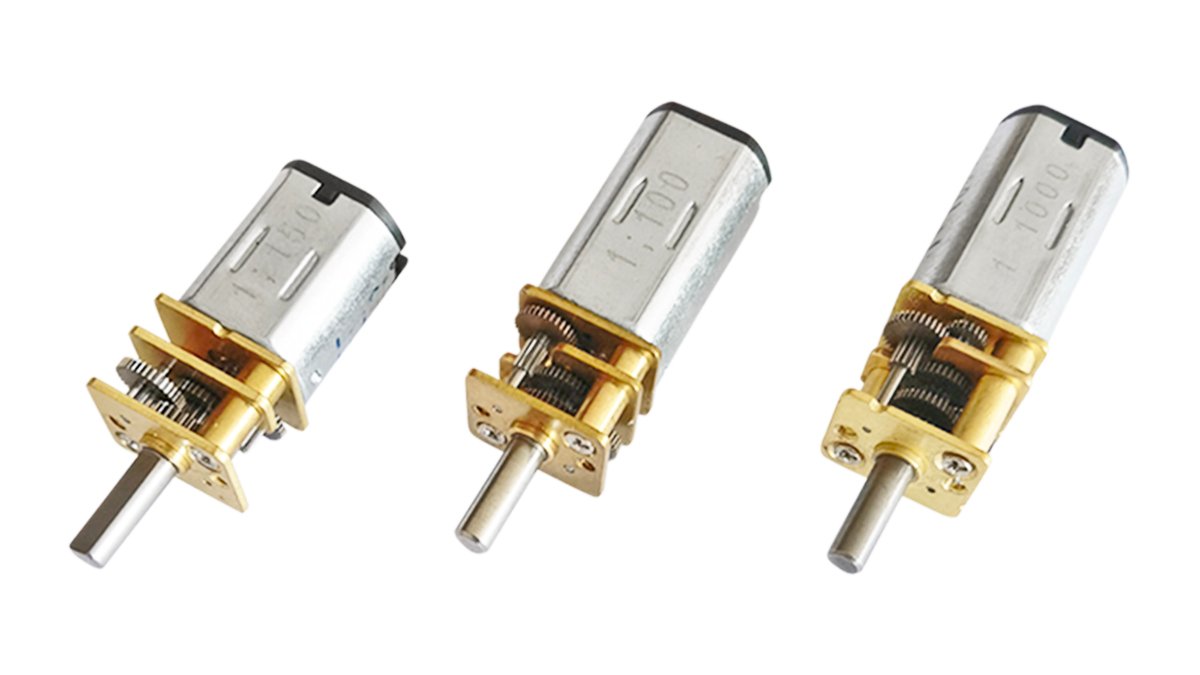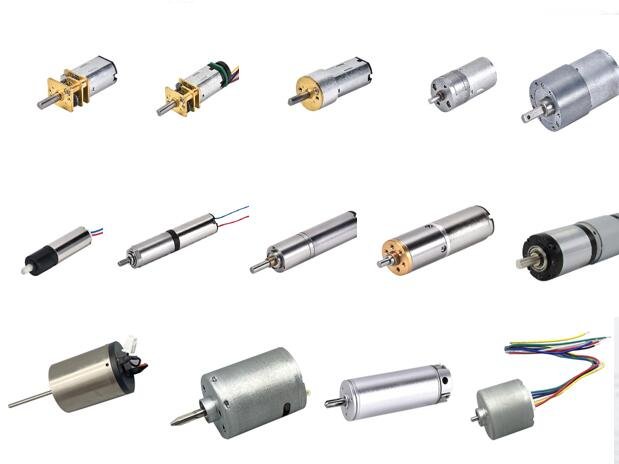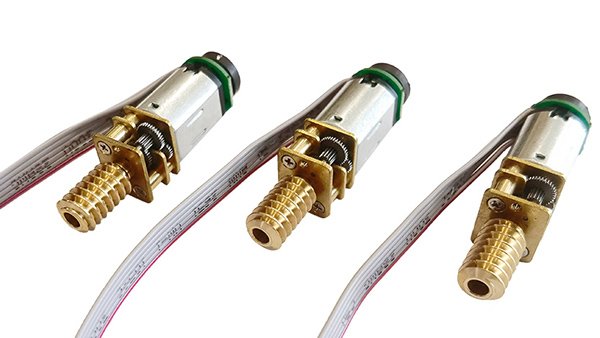A DC motor changes electricity into movement using magnetic fields. These motors are used in many machines, like robots and appliances. They are great for tasks needing exact control, like conveyor belts or cars. DC motors are simple and work well, helping improve modern technology.
Wichtigste Erkenntnisse
DC motors turn electricity into movement using magnets. They are important for things like robots and home devices.
Brushed DC motors are simple and cheap, great for small projects. Brushless DC motors work better and need less care.
You can control DC motor speed by changing voltage, using pulse-width modulation (PWM), or adjusting the magnetic field. PWM works best.
Picking the right DC motor depends on the job. Series motors are good for heavy work, while shunt motors keep a steady speed.
DC motors are used more in factories, cars, and gadgets. They are useful and important in today’s technology.
How DC Motors Work
Turning electricity into motion
DC motors are cool machines that change electricity into motion. This process powers many things, like factory machines and home gadgets. When electricity enters a DC motor, it makes a magnetic field. This field works with motor parts to create movement.
Here’s how it happens step by step:
Electricity moves through the armature wires, making a magnetic field.
This field meets the magnetic field from the motor’s fixed parts.
The meeting of fields creates a force that spins the armature, making motion.
Tools like PSPICE help engineers study how this works. These tools let them test motors in different situations. For example:
Engineers use PSPICE to check how shunt DC motors perform.
These tests improve motor designs without building costly models.
Students using these tools learn better about DC motors.
Lorentz force and how it works in DC motors
The Lorentz force is why DC motors work. It shows how electricity and magnetism make things move. When electricity flows in a wire inside a magnetic field, the wire feels a push. This push is the Lorentz force.
In a DC motor:
The armature wires are the moving part.
The magnetic field comes from the motor’s fixed poles.
The Lorentz force pushes the armature, making it spin.
The push direction depends on the current and magnetic field. You can use the “right-hand rule” to find the push direction. This rule keeps the motor spinning smoothly and efficiently.
Important parts of a DC motor
To know how DC motors work, you need to learn their parts. Each part helps turn electricity into motion. Here’s a list of the main parts:
Part | What it does |
|---|---|
Yoke | |
Magnetic Field System | Makes the main magnetic field using poles and windings. |
Armature Core | The spinning part made of steel layers to save energy. |
Armature Winding | Wires in the armature that carry electricity to make force. |
Kommutator | Changes DC power into AC for smooth spinning. |
Bürsten | Pass electricity to the armature, made of carbon for strength. |
Each part helps the motor work well. For example:
The armature wires create the spinning force, called torque.
The commutator keeps the motor spinning in one direction.
Brushes keep the electricity flowing for nonstop work.
How well these parts work depends on the motor’s design. For instance, the Maxon RE40 motor uses 24V and works at 91% efficiency. Below is a chart showing the no-load speed of different DC motor parts:

Learning about these parts shows how amazing and useful DC motors are.
Types of DC Motors
Knowing the types of DC-Motoren helps you pick the right one. Each type works best for certain jobs. Let’s look at the most common ones.
Bürstenbehaftete DC-Motoren
Gebürstet DC-Motoren are simple and widely used. They use brushes and a commutator to send electricity to the armature, making it move. These motors are popular because they are easy to use and affordable.
Why choose brushed DC-Motoren?
Easy to Use: They are simple to control. You can change their speed by adjusting the voltage.
Affordable: They cost less than other DC-Motoren, making them great for saving money.
But brushed motors have downsides. The brushes wear out and need replacing. They also make noise and heat from friction.
Here’s a table comparing brushed and brushless DC-Motoren:
Merkmal | Bürstenbehaftete DC-Motoren | Bürstenlose DC-Motoren |
|---|---|---|
Lifespan & Maintenance | Brushes wear out, need replacing | Almost no maintenance needed |
Control Precision | Speed changes with load | Precise speed and position control |
Noise & EMI | Makes buzzing and electrical noise | Quiet with little EMI |
Wirkungsgrad | Loses energy as heat | More efficient, stays cooler |
Complexity & Cost | Simple design, lower cost | Needs a controller, costs more upfront |
Gebürstet DC-Motoren are great for toys, small gadgets, and cheap industrial tools. Their simplicity and low cost make them a favorite.
Bürstenlose DC-Motoren
Bürstenlos DC-Motoren are newer and don’t use brushes. Instead, they use electronic controllers to manage electricity flow. This design makes them last longer and work better.
Why pick brushless DC-Motoren?
Efficient: They waste less energy and stay cooler during long use.
Low Maintenance: No brushes mean fewer repairs or replacements.
Precise Control: They are perfect for jobs needing exact speed and position.
Brushless motors cost more at first but save money over time. You’ll find them in drones, electric cars, and advanced machines.
Other Types: Series, Shunt, and Compound Motors
Besides brushed and brushless motors, there are series, shunt, and compound DC-Motoren. Each type is good for specific tasks.
Series DC Motors
Series motors have strong starting power, making them good for heavy-duty jobs. The armature and field windings are connected in series, letting them handle changing loads. But they can get too fast under light loads, so use them carefully.
Shunt DC Motors
Shunt motors keep a steady speed, even with different loads. The armature and field windings are connected in parallel, giving stable performance. They’re great for fans and pumps where constant speed matters.
Compound DC Motors
Compound motors mix features of series and shunt motors. They have strong starting power and steady speed, making them useful for many industrial tasks.
Here’s a quick comparison of series and shunt motors:
Parameter | DC Series Motor | DC Shunt Motor |
|---|---|---|
Anfahrdrehmoment | Very strong starting power. | Low but steady starting power. |
Torque-Current Relation | Torque grows with the square of current. | Torque grows with the current. |
Starting Current | Needs high starting current. | Needs lower starting current. |
Geschwindigkeit | Speed changes with load. | Speed stays almost the same. |
Speed Regulation | Poor speed control. | Better speed control. |
Anwendungen | Used in trains, hoists. | Used in fans, pumps. |
These DC-Motoren are used in factories, transport, and energy systems. Their flexibility and performance make them very useful.
DC Motor Control
Controlling a Gleichstrommotor is important for making it work well. It helps manage speed, power, and efficiency. Here are three simple ways to control motors.
Changing voltage to adjust speed
Changing the voltage is an easy way to control speed. Higher voltage makes the motor spin faster. Lower voltage slows it down. This works best for brushed motors, where speed changes with voltage.
For example, using a variable power supply lets you control voltage. This method is good for toys or small fans where exact speed isn’t needed. But it can waste energy, especially at low speeds.
Tipp: A voltage regulator keeps performance steady when power changes.
Using pulse-width modulation (PWM)
PWM is a smarter way to control speed. Instead of changing voltage, it turns the motor’s power on and off quickly. The on-off time, called the duty cycle, controls the average voltage. This saves energy and works better.
For instance, a 50% duty cycle gives half the voltage, slowing the motor. PWM also reduces heat, making it great for drones or electric cars. Studies show PWM improves speed control and saves energy.
Merkmal | What it does |
|---|---|
Microcontroller Use | Uses an 8051 chip to control speed. |
PWM Technique | Changes speed by adjusting duty cycles. |
Four Quadrant Operation | Allows forward, reverse, and braking modes. |
Adjusting field current
Changing field current is another way to control motors. Lowering the current makes the motor spin faster. This is called field weakening and helps balance speed and power.
This method works well for brushed motors in factories. It adjusts speed and power based on the job. Advanced tools like PID control make this process smoother and more efficient.
Benefits of field current control:
Improves speed and power control.
Allows faster speeds without wasting energy.
Makes motors respond better with fine-tuning.
Anmerkung: Sensorless methods can simplify this by removing physical sensors.
By mixing these methods, you can control DC-Motoren easily and efficiently.
Advantages and Disadvantages of DC Motors
Efficiency and lifespan comparison
DC motors are efficient and durable, but the type matters. Gebürstete Motoren are tough and simple, good for medium-speed jobs like medical equipment. Their brushes wear out over time, creating carbon dust. This dust can lower performance and increase upkeep costs.
Bürstenlose Motoren are more efficient and last longer. They don’t use brushes, so they avoid wear and problems like electromagnetic interference (EMI). These motors are small, dependable, and can work for over 20,000 hours. Their accurate speed control makes them great for important tasks like ventilators.
Tipp: Choose bürstenlose Motoren for long-term use with less maintenance, even if they cost more upfront.
Noise and maintenance considerations
Noise and upkeep are important when picking DC motors. Gebürstete Motoren make noise because their brushes rub against the commutator. As brushes wear, they release carbon dust that can build up inside the motor. This dust may block cooling, especially in hot or wet places.
Bürstenlose Motoren are quieter and need less care. Without brushes, they avoid noise and overheating risks. Tests like vibration checks and heat scans can spot problems in both motor types. These tests help motors last longer and reduce repair costs.
Anmerkung: Using tools like infrared scans or oil tests can improve motor life and performance.
Suitability for various applications
DC motors work well for many tasks, but the type matters. Gebürstete Motoren are cheap and easy to use, perfect for toys, gadgets, and low-cost tools. They’re good for jobs needing moderate speed and torque but not precision.
Bürstenlose Motoren are best for advanced uses like drones, electric cars, and robots. They’re efficient and precise, making them reliable for tasks needing accuracy and durability. Series motors handle heavy loads, while shunt motors keep steady speeds for fans and pumps. Compound motors mix both features, making them useful for factories.
Tipp: Pick the right motor for your task. For fast jobs, bürstenlose Motoren are ideal. For budget-friendly options, brushed motors are better.
Applications of DC Motors
Industrial machinery and robotics
DC motors are important for machines and robots in factories. They give accurate control and work dependably, making them great for manufacturing. For example, robotic arms use brushless DC motors for smooth and precise movements. These motors also run conveyor belts, helping factories stay productive.
The need for DC motors in industries is growing fast. In 2023, factory machines made up 30.3% of the DC motor market. This rise comes from the demand for reliable motors in automation. The Asia Pacific region leads with 42.1% of the market, thanks to new technology and urban growth. Europe is also using more DC motors due to stricter emission rules and renewable energy efforts.
Automotive systems
DC motors are key parts of today’s cars. They power things like electric windows, seats, and wipers. In electric cars (EVs), DC motors drive the wheels, giving smooth acceleration. Brushless DC motors are popular in EVs because they are efficient and need little upkeep.
The car industry is moving toward greener solutions, boosting the use of DC motors. These motors cut carbon emissions and improve how cars perform. For example, brushless DC motors in EVs save energy, making them vital for eco-friendly transportation.
Consumer electronics and household appliances
DC motors are common in gadgets and home appliances. They run items like fans, blenders, and vacuums. Brushless DC motors are often used in smart home devices, allowing remote control and voice commands.
Here are some cool facts about DC motors in home appliances:
DC micromotors use 30% less energy than older motors.
Kitchen tools like food processors make up 30% of the DC micromotor market.
Smart homes have increased the need for DC motors, making devices more efficient and user-friendly.
Picking the right motor can improve how your devices work and save energy every day.
DC motors change electricity into movement. They work using magnets and electric current to create spinning force. There are two main types: brushed and brushless. Each type is good for different jobs. You can control their speed by changing voltage or using PWM. These motors are used in factories, homes, and more because they are so useful.
When picking a motor, think about voltage, torque, and job needs. Brushed motors are cheaper, while brushless ones last longer and work better. Check the table below to find the right motor for your task:
What You Need | Best Motor Type |
|---|---|
Low cost, simple design | Brushed PMDC Motor |
Saves energy, small size | Brushless DC Motor (BLDC) |
Strong starting power | Series Wound Motor |
Steady speed with changing load | Shunt Wound Motor |
Mix of speed and power | Compound Motor |
Exact movement or holding | Stepper Motor (BLDC subtype) |
By learning these basics, you can pick the perfect motor for your project.
FAQ
What makes brushed and brushless DC motors different?
Gebürstete Motoren use brushes to move electricity, while brushless motors use electronic parts. Brushless motors last longer, are quieter, and work better. Brushed motors are easier to make and cost less.
How do you change a DC motor’s speed?
You can change the speed by adjusting voltage, using PWM, or changing the field current. PWM is the best way because it saves energy and keeps the motor cooler.
Why do DC motors need care?
Brushed motors need care because their brushes wear out. Worn brushes make carbon dust, which can hurt how the motor works. Brushless motors need less care since they don’t have brushes.
Which DC motor works best for heavy tasks?
Series DC motors are great for heavy tasks. They start with strong power, making them good for trains, hoists, and elevators.
Can DC motors work with green energy?
Yes, DC motors can work with green energy like solar power. They turn electricity into motion well, making them great for solar pumps or electric cars.
